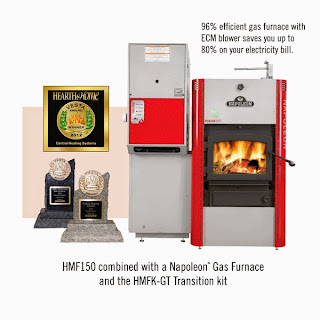Furnace manufacturers and fuel suppliers (natural gas, propane, oil and electrical) all recommend annual maintenance for your home comfort equipment. Many people wonder if this is really necessary, as equipment will often run for several years trouble free.
There are several important reasons that make annual maintenance a wise choice.
Efficiency
Equipment that is not cleaned regularly and adjusted properly, accumulates dirt and moisture residue. This causes it to use more energy (up to 30% more). Even a small improvement in efficiency will pay for a service call. Homeowners can do some simple tasks themselves. Changing filters on a regular basis, replacing batteries in the thermostat yearly and keeping your outside unit clear of debris and shrubs are jobs that you can do yourself. Modern furnaces are complex, so you do need a licensed technician to 'check under the hood'.
Safety
This is of particular concern on gas, propane, oil or wood heating systems. These systems all produce CO gas, which is deadly. A licensed technician will measure CO levels in your home as part of his inspection. Furnace exhaust fumes must be ventilated from your house properly. A cracked heat exchanger on your furnace can be very dangerous. It is now law in Ontario to have a working CO detector in each and every home.
Warranty
Many new furnaces and air conditioners come with 10 year warranties on parts. All warranties require annual maintenance inspections to keep the warranty valid. Failures on properly maintained equipment are less likely. Parts on older equipment can be quite costly, so you’ll want to keep your warranty in place.
Air Quality
Dirty filters will cause your equipment to run less efficiently. Many new homes are also equipped with air exchangers. New furnaces also rely on outside air for combustion. Many home owners do not really understand how all their equipment works. In addition to heating and cooling your home, your equipment helps improve the home's air quality, which directly affects you and your family's health.
Water Damage
Many people do not realize that modern equipment requires drains that are operating correctly and clean. In the summer your air conditioner produces condensate that drains the entire time its running. High efficiency furnaces also produce condensate in the winter months. Humidifiers also drain water as they run. Plugged drains on your furnace can produce as much damage as any other leaking water source.
Equipment Life and Reliability
Just like your car, properly maintained home comfort equipment will last longer and be more reliable. Equipment will often fail when it’s under the most stress. Failures will occur on some of the coldest or hottest days of the year (and not usually Mon-Fri between 8-5!). These are also the days that contractors are the busiest, so they cannot always get to your home immediately.
The Hayter Group employs only licensed technicians to visit your home and inspect your equipment. We often receive testimonial letters about the professionalism of our staff. We offer annual maintenance programs for our valued clients at reduced rates and no after hour’s charges. You don’t have to remember to call us every year and we’ll provide you with an affordable price for quality annual maintenance.
Chad Hayter


















